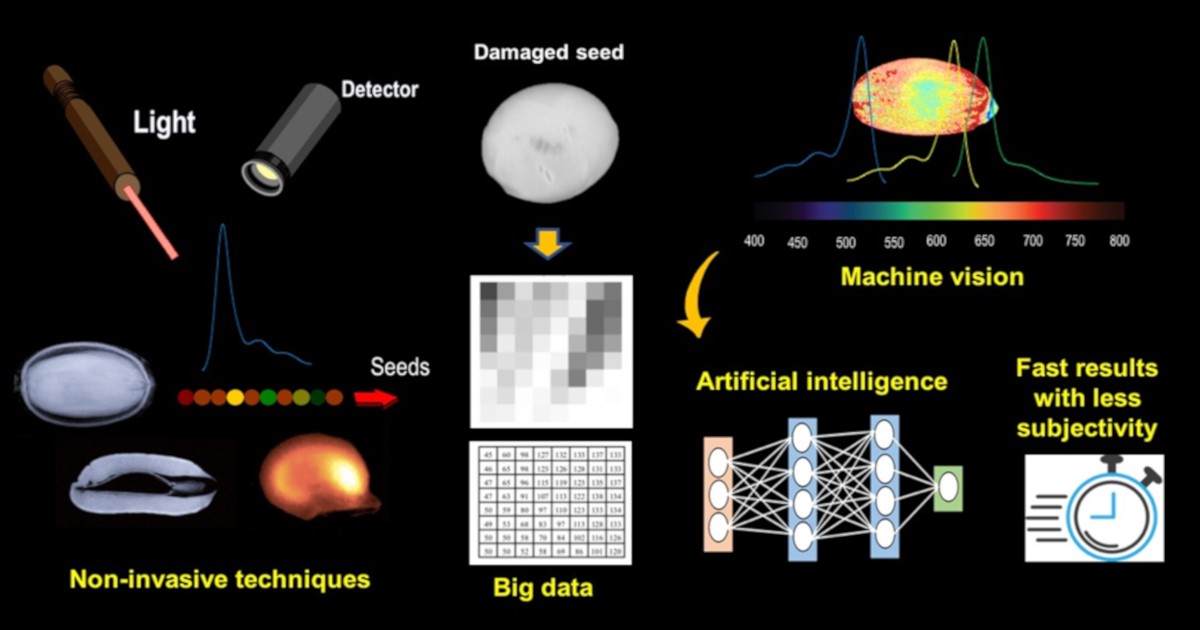- 3.4Impact Factor
- 6.7CiteScore
- 18 daysTime to First Decision
Agrotechnics in Seed Quality: Current Progress and Challenges
This special issue belongs to the section “Plant-Crop Biology and Biochemistry“.
Special Issue Information
Dear Colleagues,
Around the world, the seed industry has undergone many transformations driven by recent trends in digital agriculture, such as robust optical sensors, software, robotics, automation, and sophisticated data analyses. Sustainable methods have been developed based on non-destructive measurements without relying on human vision.
An important approach that has contributed to the implementation of digital solutions is the creation of machine learning models. These models can automatically diagnose the genetic, physical, chemical, physiological, and health attributes of seed quality. For example, knowledge of the electromagnetic properties of the seed tissues has enabled the non-invasive detection of mechanical damage, insects, and physiological disturbances in agricultural seeds.
This Special Issue focuses on the main technologies for autonomous seed quality screening, including spectroscopy, multispectral imaging, radiographs, and autofluorescence, among others, with an emphasis on agricultural challenges and current trends to assess seed quality parameters.
You may choose our Joint Special Issue in Seeds.
Dr. Clíssia Barboza Mastrangelo
Dr. Edvaldo Aparecido Amaral Da Silva
Guest Editors
Manuscript Submission Information
Manuscripts should be submitted online at www.mdpi.com by registering and logging in to this website. Once you are registered, click here to go to the submission form. Manuscripts can be submitted until the deadline. All submissions that pass pre-check are peer-reviewed. Accepted papers will be published continuously in the journal (as soon as accepted) and will be listed together on the special issue website. Research articles, review articles as well as short communications are invited. For planned papers, a title and short abstract (about 250 words) can be sent to the Editorial Office for assessment.
Submitted manuscripts should not have been published previously, nor be under consideration for publication elsewhere (except conference proceedings papers). All manuscripts are thoroughly refereed through a single-blind peer-review process. A guide for authors and other relevant information for submission of manuscripts is available on the Instructions for Authors page. Agronomy is an international peer-reviewed open access semimonthly journal published by MDPI.
Please visit the Instructions for Authors page before submitting a manuscript. The Article Processing Charge (APC) for publication in this open access journal is 2600 CHF (Swiss Francs). Submitted papers should be well formatted and use good English. Authors may use MDPI's English editing service prior to publication or during author revisions.
Keywords
- multispectral imaging
- spectroscopy
- fluorescence
- radiography
- hyperspectral image
- tomography
- magnetic resonance
- machine learning
- seed vigor
- fungi

Benefits of Publishing in a Special Issue
- Ease of navigation: Grouping papers by topic helps scholars navigate broad scope journals more efficiently.
- Greater discoverability: Special Issues support the reach and impact of scientific research. Articles in Special Issues are more discoverable and cited more frequently.
- Expansion of research network: Special Issues facilitate connections among authors, fostering scientific collaborations.
- External promotion: Articles in Special Issues are often promoted through the journal's social media, increasing their visibility.
- e-Book format: Special Issues with more than 10 articles can be published as dedicated e-books, ensuring wide and rapid dissemination.

